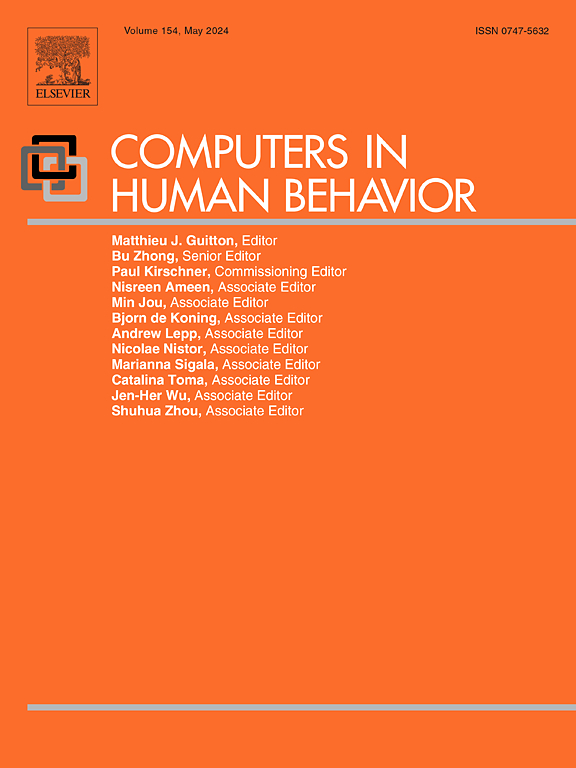Young people and false information: A scoping review of responses, influential factors, consequences, and prevention programs
IF 9
1区 心理学
Q1 PSYCHOLOGY, EXPERIMENTAL
引用次数: 0
Abstract
Today's digital landscape, marked by extensive use of information and communication technology, exposes young people to false information that shapes their perceptions of themselves and society. Yet, a comprehensive synthesis of research on false information among young people is lacking. This scoping review addressed this gap by exploring how young people respond to false information, the factors influencing their responses, the consequences of false information exposure, and existing prevention and intervention efforts. Out of 2255 identified records, 151 qualitative, quantitative, and mixed-method studies on young people aged 5 to 25 published before July 2024 were included. An adapted version of the Misinformation Recognition and Response Model was used to structure the findings. The analyses revealed that although young people often expressed high confidence in their judgments, they struggled to detect false information and respond passively – often ignoring rather than actively countering false information. Socio-demographic characteristics, cognitive biases, and social dynamics significantly shaped their responses. The consequences of these vulnerabilities were multifaceted, ranging from negative affective outcomes, such as confusion and fear, to broader societal impacts, including public disengagement and reduced political participation. To mitigate these risks, future strategies should focus on enhancing young people's ability to detect false information, empowering them to challenge false information actively, and increasing awareness of their own susceptibility. Furthermore, this review highlights ongoing challenges in the field, including methodological diversity, and the underrepresentation of minorities and younger children, underscoring the need for continued research to support young people growing up in a digitalized world.
年轻人和虚假信息:对反应、影响因素、后果和预防方案的范围审查
当今的数字环境以信息和通信技术的广泛使用为标志,使年轻人接触到虚假信息,这些信息塑造了他们对自己和社会的看法。然而,缺乏对年轻人中虚假信息的全面综合研究。本综述通过探讨年轻人对虚假信息的反应、影响他们反应的因素、虚假信息暴露的后果以及现有的预防和干预措施,解决了这一差距。在2255份已确定的记录中,纳入了151份在2024年7月之前发表的针对5至25岁年轻人的定性、定量和混合方法研究。错误信息识别和反应模型的一个改编版本被用来构建研究结果。分析显示,尽管年轻人经常对自己的判断表现出很高的信心,但他们很难发现虚假信息,并被动地做出反应——往往忽略而不是积极反击虚假信息。社会人口特征、认知偏见和社会动态显著地影响了他们的反应。这些脆弱性的后果是多方面的,从负面的情感结果,如困惑和恐惧,到更广泛的社会影响,包括公众脱离参与和减少政治参与。为了减轻这些风险,未来的策略应侧重于提高年轻人发现虚假信息的能力,赋予他们积极挑战虚假信息的能力,并提高他们对自身易感性的认识。此外,本综述强调了该领域目前面临的挑战,包括方法多样性、少数民族和幼儿代表性不足,强调需要继续开展研究,以支持年轻人在数字化世界中成长。
本文章由计算机程序翻译,如有差异,请以英文原文为准。
求助全文
约1分钟内获得全文
求助全文
来源期刊

Computers in Human Behavior
Multiple-
CiteScore
19.10
自引率
4.00%
发文量
381
审稿时长
40 days
期刊介绍:
Computers in Human Behavior is a scholarly journal that explores the psychological aspects of computer use. It covers original theoretical works, research reports, literature reviews, and software and book reviews. The journal examines both the use of computers in psychology, psychiatry, and related fields, and the psychological impact of computer use on individuals, groups, and society. Articles discuss topics such as professional practice, training, research, human development, learning, cognition, personality, and social interactions. It focuses on human interactions with computers, considering the computer as a medium through which human behaviors are shaped and expressed. Professionals interested in the psychological aspects of computer use will find this journal valuable, even with limited knowledge of computers.
 求助内容:
求助内容: 应助结果提醒方式:
应助结果提醒方式:


